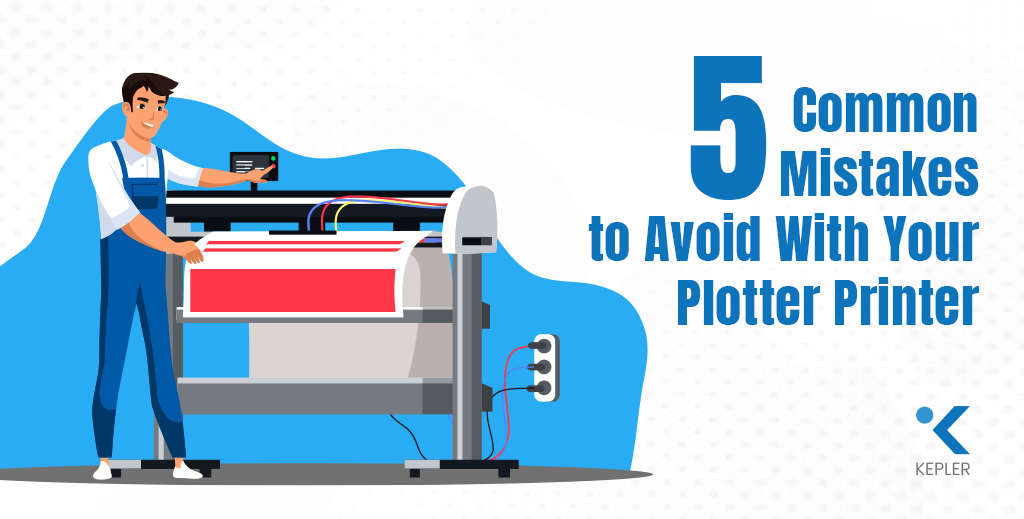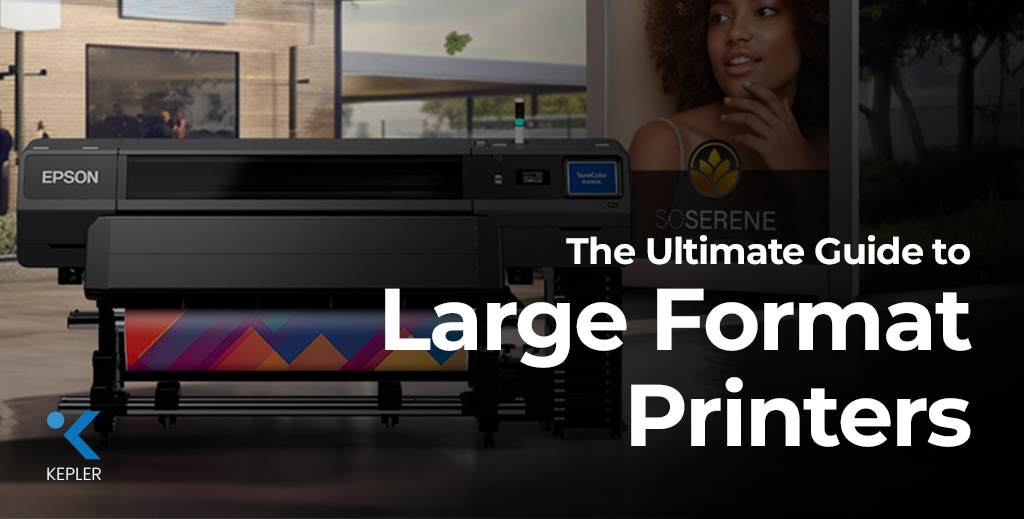5 Common Mistakes to Avoid With Your Plotter Printer
If you work in architecture, engineering, design, or signage, you know how vital a plotter printer is for creating precise, large-format prints. From technical drawings to marketing materials, plotter printers allow professionals to turn digital designs into high-quality physical outputs. But even the most advanced plotter printer can underperform if not used correctly. To get the most out of your plotter printer, it’s essential to avoid mistakes that lead to poor print quality, wasted resources, and reduced productivity. Whether you’re new to using large-format printers or an experienced professional, understanding the common pitfalls can save you time, money, and frustration. In this blog, we’ll explore the most frequent mistakes people make with plotter printers and provide actionable tips to avoid them. You’ll learn about calibration, ink and media choices, maintenance routines, print settings, and proper media handling. By the end, you’ll be equipped to maximize efficiency and produce flawless prints consistently.Let’s dive in. Mistake 1: Not Calibrating the Plotter Printer Have you ever noticed lines that are slightly skewed or colors that don’t line up on your prints? This is often a calibration issue. Why Calibration Matters A plotter printer is a precision instrument. Over time, mechanical components can shift, rollers may settle, and print heads can misalign. Without regular calibration, printers can produce inaccurate outputs. Proper calibration ensures that every print is sharp, colors are aligned, and dimensions are precise. Consequences of Skipping Calibration How to Calibrate Your Plotter Printer 1. Warm up the printer: Run a short print to stabilize the components.2. Access the calibration menu: Most plotters have built-in software or control panel options.3. Print a calibration sheet: Follow the on-screen instructions for alignment patterns.4. Check and adjust: Measure the print and adjust offsets or alignment settings as needed.5. Verify results: Run a test print to ensure everything is correctly aligned. Regular calibration not only improves print quality but also prolongs the lifespan of your printer and reduces waste. Mistake 2: Using Low-Quality Ink or Media Many users underestimate how important quality consumables are for plotter printers. Using low-quality ink or paper might save money upfront, but it often costs more in the long run. Why High-Quality Ink and Media Matter High-quality ink ensures vibrant, consistent colors and prevents clogs in print heads. The right media provides smooth, accurate prints and prevents jams or curling. Together, they allow your plotter printer to operate at its full potential. Consequences of Cheap Supplies Tips for Choosing the Right Consumables Investing in high-quality supplies ensures consistent performance and protects your printer investment. Mistake 3: Not Maintaining the Plotter Printer Think of your plotter printer as a high-precision tool. Neglecting maintenance can lead to bigger problems down the line. Importance of Regular Maintenance Dust, dried ink, and worn-out mechanical parts can accumulate and affect print quality. Scheduled maintenance keeps your printer performing optimally. Consequences of Poor Maintenance Routine Maintenance Steps Regular care ensures smoother operations and longer printer life, particularly for busy offices using Epson plotter printers like Epson SureColor SC-T5100. Mistake 4: Not Optimizing Print Settings Even if your printer is in perfect condition, incorrect settings can ruin a print. Why Optimizing Print Settings Matters Print settings affect resolution, color quality, ink usage, and media handling. Matching settings to your specific project type ensures cost-efficiency and quality output. Consequences of Unoptimized Settings Tips to Optimize Settings Optimizing settings helps maximize efficiency while maintaining top-notch print quality. Mistake 5: Not Handling Print Media Properly How you handle rolls, sheets, and other media impacts print quality more than most people realize. Importance of Proper Media Handling Incorrect handling can cause jams, misfeeds, or damage to both the media and printer. Consequences of Improper Handling Best Practices Proper handling keeps your workflow seamless and prevents costly interruptions. FAQs Q1: Can I use any ink with my plotter printer?It’s recommended to use OEM or certified inks to prevent clogs and maintain print quality. Q2: How often should I calibrate my plotter printer?Calibration frequency depends on usage, but generally, a weekly or monthly schedule is effective for busy offices. Q3: Does maintenance really affect print quality?Absolutely. Regular cleaning and inspections prevent smudges, misalignment, and printer damage. Q4: How do I know if my print settings are optimized?Check test prints for color accuracy, alignment, and resolution. Adjust settings based on media and project requirements. Q5: What’s the best way to store plotter media?Keep media in a cool, dry place, rolled or flat, and sealed if possible to avoid moisture or warping. Conclusion Avoiding these common mistakes skipping calibration, using low-quality ink or media, neglecting maintenance, not optimizing print settings, and improper media handling, can dramatically improve the performance and longevity of your plotter printer. By following these best practices, you’ll enjoy clearer prints, fewer errors, and a more efficient workflow. Investing in a reliable brand like Epson ensures precision, durability, and consistent results for large-format printing needs. If you’re looking for expert support and high-quality Epson plotter printers in Dubai or across the UAE, reach out to Kepler Tech LLC, one of the authorized Epson dealers. Take control of your prints today and elevate your workflow efficiency.
5 Common Mistakes to Avoid With Your Plotter Printer Read Post »


